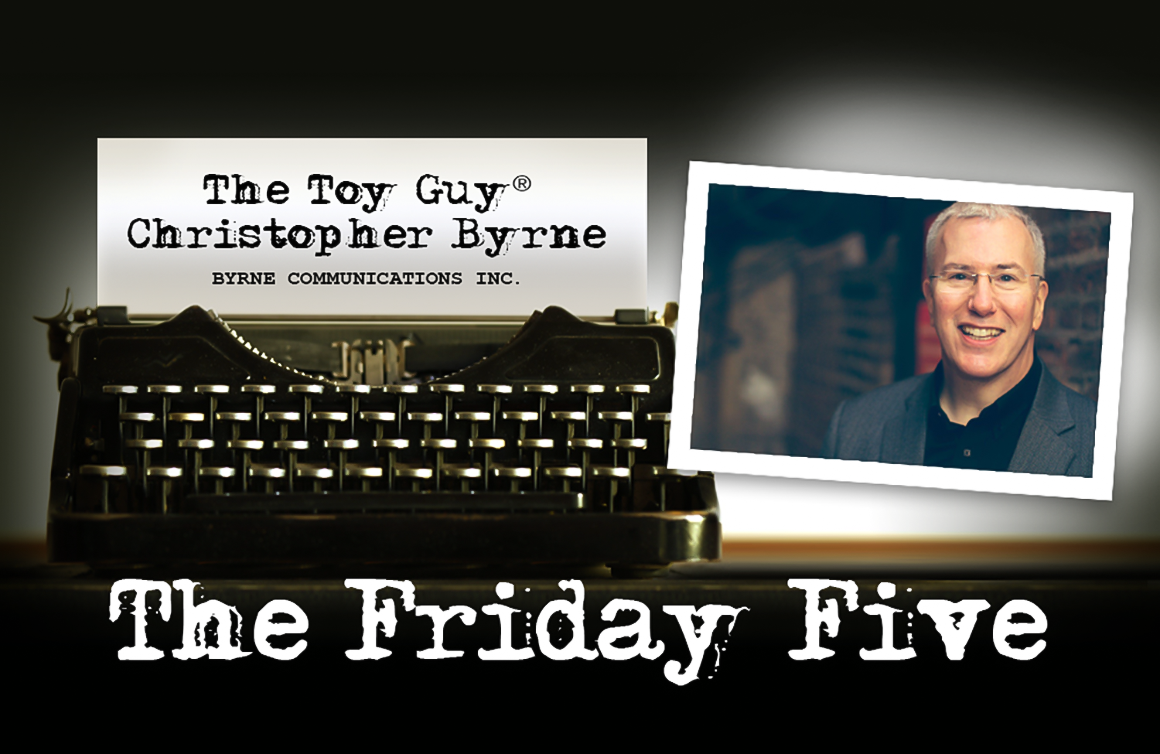You co-host a podcast with Richard Gottlieb of Global Toy Experts called The Playground. For readers who may not be familiar with it, tell us about your focus and some past guests.
The Playground began in April 2019. I had been thinking about how people consume information online, did some research, and realized there wasn’t a podcast dedicated to the toy trade. From the start, the goal has been to be a service to the toy industry and provide a platform for all the interesting and talented people who work in it.
I’ve known Richard for 20 years. He’s a very lively conversationalist and we have a similar academic, intellectual, and toy background. We started by interviewing people in the toy industry (C-suite executives, CEOs, and inventors) and expanded into other issues, such as licensing, diversity and inclusion, and the impact of COVID-19.
We try to publish something new every week, which seems to be the frequency our listeners want.

Why do you think some vintage toys continue to evolve and thrive in the marketplace?
There are a variety of reasons for this. Take Etch a Sketch, for example. Ohio Art introduced it in 1960, and it has sold ever since. As kids moved into more tech toys, it was still a consistent best seller. In the early 2000s, Ohio Art even marketed it as “the original laptop.” The Etch A Sketch is an excellent example of one of those classic toys that isn’t complete without the child. Toys that need children to bring them to life are powerful.
Toy lines like Transformers are narrative-based and provide children with a classic good vs. evil storyline. To remain relevant, companies often subtly tweak the line and create new stories to reflect how children are evolving. Transformers fits into kid’s logic and the line is very empowering for them.
Companies are always tempted to create line extensions in an attempt to have more retail presence. However, this approach can be risky because it may cause them to move away from the central play experience that appeals to children. In the end, it can narrow their potential market. It is a very rare toy that can move away from play and remain successful.

What toy category is currently seeing a boom so far in 2020?
Puzzles! While they have been relatively strong for years, much of the current boom is being driven by COVID-19. However, some of it is also macro-economic. People are looking for something to do, something new. Puzzles give a mental break from stress. They’re not competitive, they’re cooperative, which makes them ideal for families. They’re also not prone to fads.
There’s an emotional benefit to completing a 1,000-piece jigsaw puzzle. You did something concrete and that rewards your brain.

How do you think toy fairs will (and perhaps should) pivot their events in response to COVID-19?
In the near-term, the emphasis will be on virtual experiences. For example, for the first time in 23 years, I’m not planning to get on a plane and go to the Hong Kong Toys and Games Fair, but I will attend virtually.
There are some wonderful platforms out there for virtual meetings, but there’s also a huge learning curve for using them to make effective presentations and properly demonstrate toys.
Virtual events lack nuance. Looking at a toy online is not the same as touching, feeling, and seeing it in person. You’re not buying a commodity—a toy needs to make a connection with a buyer. When I see a toy in person, I’m able to contextualize what it will look like in a store and focus on a few key features.
People are eager to be back together. From a practical standpoint, I suspect there will now be a much more significant virtual component at each show. For example, Walmart might still send their top two or three buyers to Hong Kong, but companies can also offer virtual showroom tours so that an entire team can see something. This model hasn’t happened before.

The COVID-19 pandemic has made play even more essential for children. Do you have any tips for parents and educators who are looking to empower children in this regard?
I always say to parents: follow the child’s lead and what the child is interested in doing because that will be immersive. What does your child like to do? At some point, the toy is almost irrelevant because the play and the experience are most important.
For teachers, there’s a real challenge with distance learning. Toys that allow kids to learn and play, but not in an overbearing, heavy-handed way, are often good choices. For younger kids, you’re creating the play experience and the residual effect is skill acquisition.
One of the benefits of play in school or at home is learning how to learn. Failing is important in this context. It allows children to engage in experimentation and progress from failure to competency or even mastery. If you shortchange any of these stages, solid learning doesn’t occur.

Follow Christopher Byrne on his website and tune into weekly installments of The Playground podcast here.

